Fast Heating Model for the Aircraft Cabin Air
Abstract
1. Introduction
2. Method
2.1. Physical Description
2.2. Numerical Model Description
2.2.1. Cabin Air Flow
2.2.2. Cabin Heat Transfer Models Between the Air and the Solid Objects
2.2.3. Model Implementation
2.3. Experiment Description
3. Results
3.1. Method 1: Hot Air
3.2. Method 2: Hot Air with the Electric Heating Blanket
4. Discussion
5. Conclusions
Author Contributions
Funding
Acknowledgments
Conflicts of Interest
References
- Pang, L.; Qin, Y.; Liu, D.; Liu, M. Thermal comfort assessment in civil aircraft cabins. Chin. J. Aeronaut. 2014, 27, 210–216. [Google Scholar] [CrossRef]
- Park, S.; Hellwig, R.T.; Grün, G.; Holm, A. Local and overall thermal comfort in an aircraft cabin and their interrelations. Build. Environ. 2011, 46, 1056–1064. [Google Scholar] [CrossRef]
- Cui, W.; Ouyang, Q.; Zhu, Y. Field study of thermal environment spatial distribution and passenger local thermal comfort in aircraft cabin. Build. Environ. 2014, 80, 213–220. [Google Scholar] [CrossRef]
- Haghighat, F.; Allard, F.; Megri, A.C.; Blondeau, P.; Shimotakahara, R. Measurement of Thermal Comfort and Indoor Air Quality aboard 43 Flights on Commercial Airlines. Indoor Built Environ. 1999, 8, 58–66. [Google Scholar] [CrossRef]
- Ross, D.; Crump, D.; Hunter, C.; Perera, E.; Sheridan, A. Extending cabin air measurements to include older aircraft types utilized in volume short haul operation. Client Rep. 2003, 212034-26. [Google Scholar]
- ANSI/ASHRAE Standard 55-2013. Thermal Environment Conditions for Human Occupancy; American National Standards Institute: Washington, DC, USA, 2013. [Google Scholar]
- Wu, X.; Olesen, B.W.; Fang, L.; Zhao, J. A nodal model to predict vertical temperature distribution in a room with floor heating and displacement ventilation. Build. Environ. 2013, 59, 626–634. [Google Scholar] [CrossRef]
- Liu, W.; Wen, J.; Lin, C.-H.; Liu, J.; Long, Z.; Chen, Q. Evaluation of various categories of turbulence models for predicting air distribution in an airliner cabin. Build. Environ. 2013, 65, 118–131. [Google Scholar] [CrossRef]
- Zhang, Z.; Chen, X.; Mazumdar, S.; Zhang, T.; Chen, Q. Experimental and numerical investigation of airflow and contaminant transport in an airliner cabin mockup. Build. Environ. 2009, 44, 85–94. [Google Scholar] [CrossRef]
- Lin, C.H.; Horstman, R.; Ahlers, M.; Sedgwick, L.; Dunn, K.; Topmiller, J.; Bennett, J.; Wirogo, S. Numerical simulation of airflow and airborne pathogen transport in aircraft cabins-Part 1: Numerical simulation of the flow field. ASHRAE Trans. 2005, 111, 755–763. [Google Scholar]
- Singh, A.; Hosni, M.H.; Horstman, R.H. Numerical simulation of airflow in an aircraft cabin section. ASHRAE Trans. 2002, 108, 1005–1013. [Google Scholar]
- Zhang, T.; Chen, Q.Y. Novel air distribution systems for commercial aircraft cabins. Build. Environ. 2007, 42, 1675–1684. [Google Scholar] [CrossRef]
- Liu, W.; Wen, J.; Chao, J.; Yin, W.; Shen, C.; Lai, D.; Lin, C.-H.; Liu, J.; Sun, H.; Chen, Q. Accurate and high-resolution boundary conditions and flow fields in the first-class cabin of an MD-82 commercial airliner. Atmos. Environ. 2012, 56, 33–44. [Google Scholar] [CrossRef]
- Mizuno, T.; Warfield, M. Development of three-dimensional thermal airflow analysis computer program and verification test. ASHRAE J. 1992, 98, 329–338. [Google Scholar]
- Sevilgen, G.; Kilic, M. Three dimensional numerical analysis of temperature distribution in an automobile cabin. Therm. Sci. 2012, 16, 321–326. [Google Scholar] [CrossRef]
- Chen, C.; Liu, W.; Li, F.; Lin, C.-H.; Liu, J.; Pei, J.; Chen, Q. A hybrid model for investigating transient particle transport in enclosed environments. Build. Environ. 2013, 62, 45–54. [Google Scholar] [CrossRef]
- Gao, N.P.; Niu, J.L. Personalized ventilation for commercial aircraft cabins. J. Aircr. 2008, 45, 508–512. [Google Scholar] [CrossRef]
- Isukapalli, S.S.; Mazumdar, S.; George, P.; Wei, B.; Jones, B.; Weisel, C.P. Computational fluid dynamics modeling of transport and deposition of pesticides in an aircraft cabin. Atmos. Environ. 2012, 68, 198–207. [Google Scholar] [CrossRef]
- Liu, W.; Mazumdar, S.; Zhang, Z.; Poussou, S.B.; Liu, J.; Lin, C.-H.; Chen, Q. State-of-the-art methods for studying air distributions in commercial airliner cabins. Build. Environ. 2012, 47, 5–12. [Google Scholar] [CrossRef]
- Gan, G. Prediction of turbulent buoyant flow using an RNG k-ε model. Numer. Heat Transf. Part A Appl. 1998, 33, 169–189. [Google Scholar] [CrossRef]
- Singh, D.; Premachandran, B.; Kohli, S. Numerical Simulation of the Jet Impingement Cooling of a Circular Cylinder. Numer. Heat Transf. Part A Appl. 2013, 64, 153–185. [Google Scholar] [CrossRef]
- Isman, M.K.; Pulat, E.; Etemoglu, A.B.; Can, M. Numerical Investigation of Turbulent Impinging Jet Cooling of a Constant Heat Flux Surface. Numer. Heat Transf. Part A Appl. 2008, 53, 1109–1132. [Google Scholar] [CrossRef]
- ANSYS Fluent 12.0 Documentation; Fluent Inc.: Lebanon, NH, USA, 2009.
- Arpaci, V.S. Conduction Heat Transfer; Addison-Wesley: Boston, MA, USA, 1966. [Google Scholar]
- Patankar, S. Heat Transfer and Fluid Flow Numerical Simulation; Hemisphere Publishing Corporation: Washington, DC, USA, 1980. [Google Scholar]
- Costa, M.; Buddhi, D.; Oliva, A. Numerical simulation of a latent heat thermal energy storage system with enhanced heat conduction. Energy Convers. Manag. 1998, 39, 319–330. [Google Scholar] [CrossRef]
- Zelensky, P.; Bartak, M.; Hensen, J.L.M.; Vavricka, R. Influence of turbulence model on thermal plume in indoor air flow simulation. In Proceedings of the 11th REHVA World Congress & 8th international Conference on IAQVEC (CLIMA 2013), Energy efficient, smart and healthy buildings, Prague, Czech Republic, 16–19 June 2013. [Google Scholar]
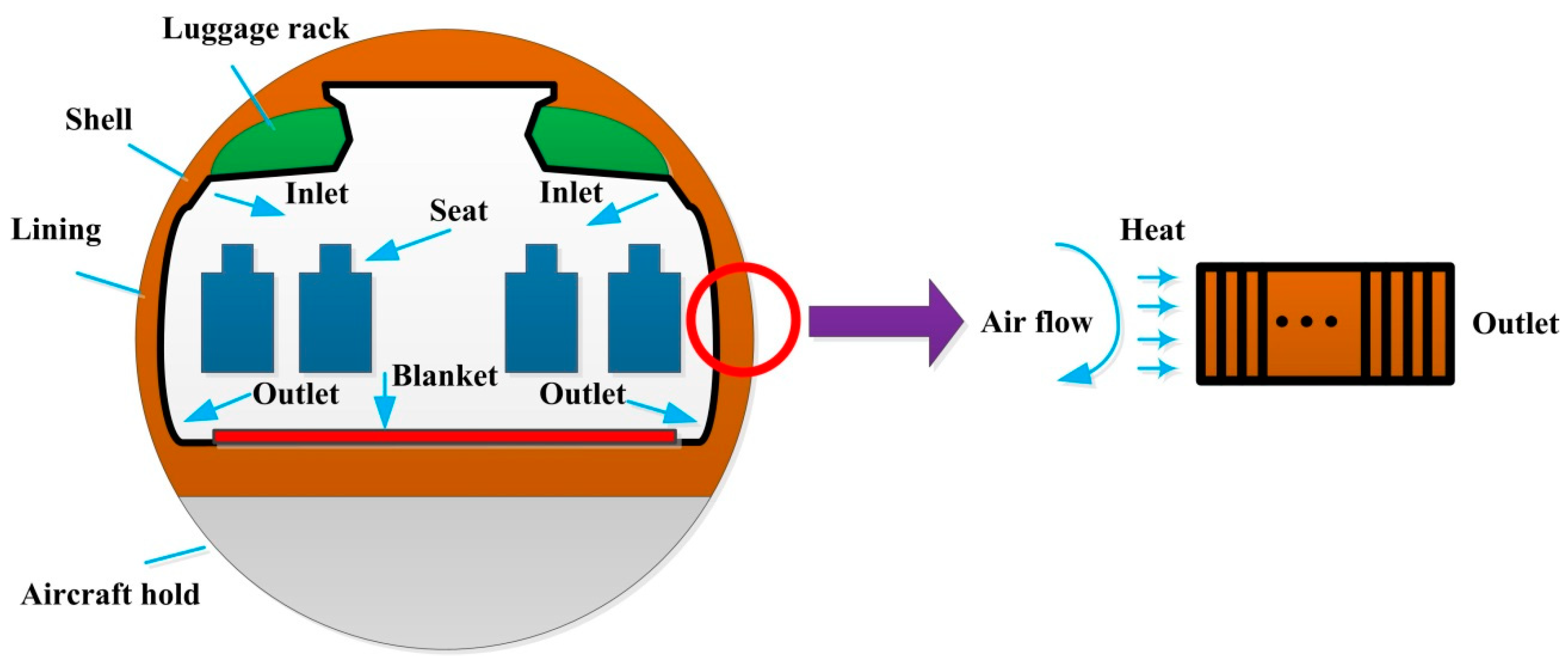
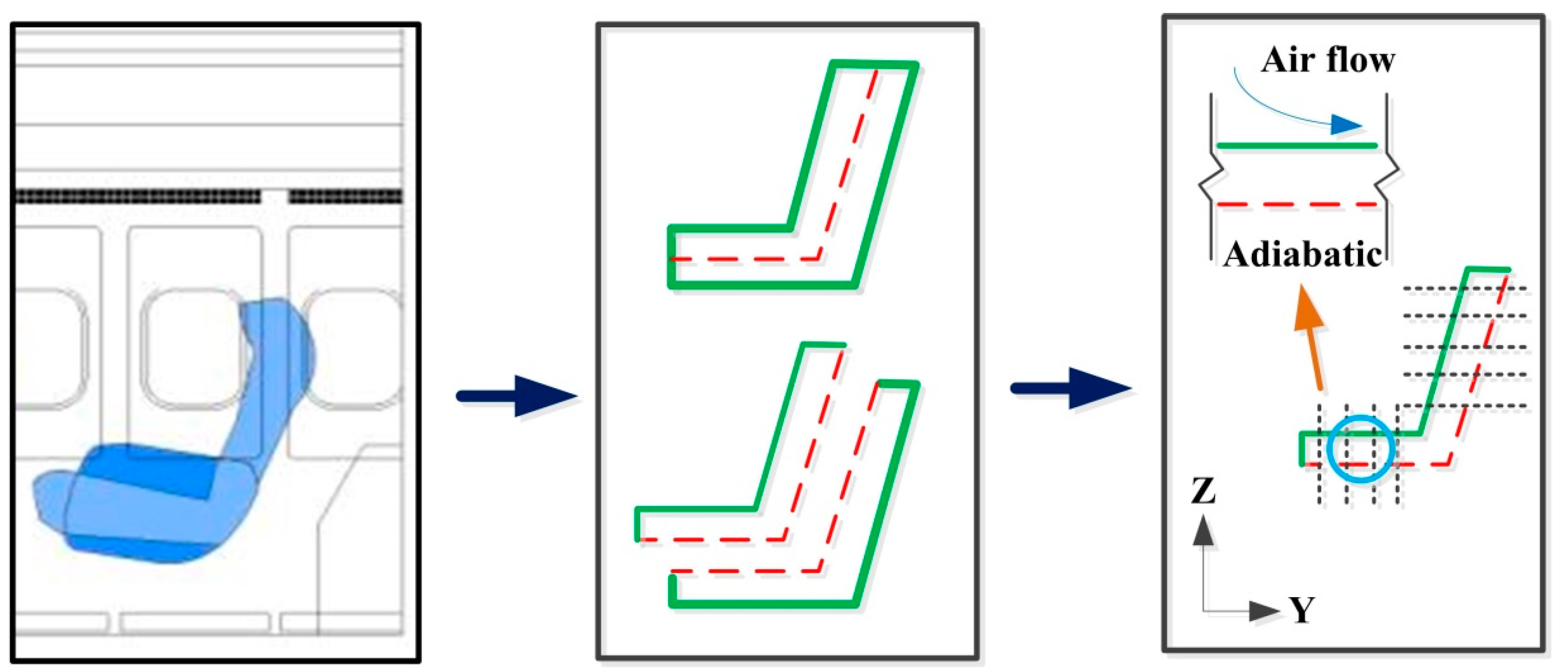
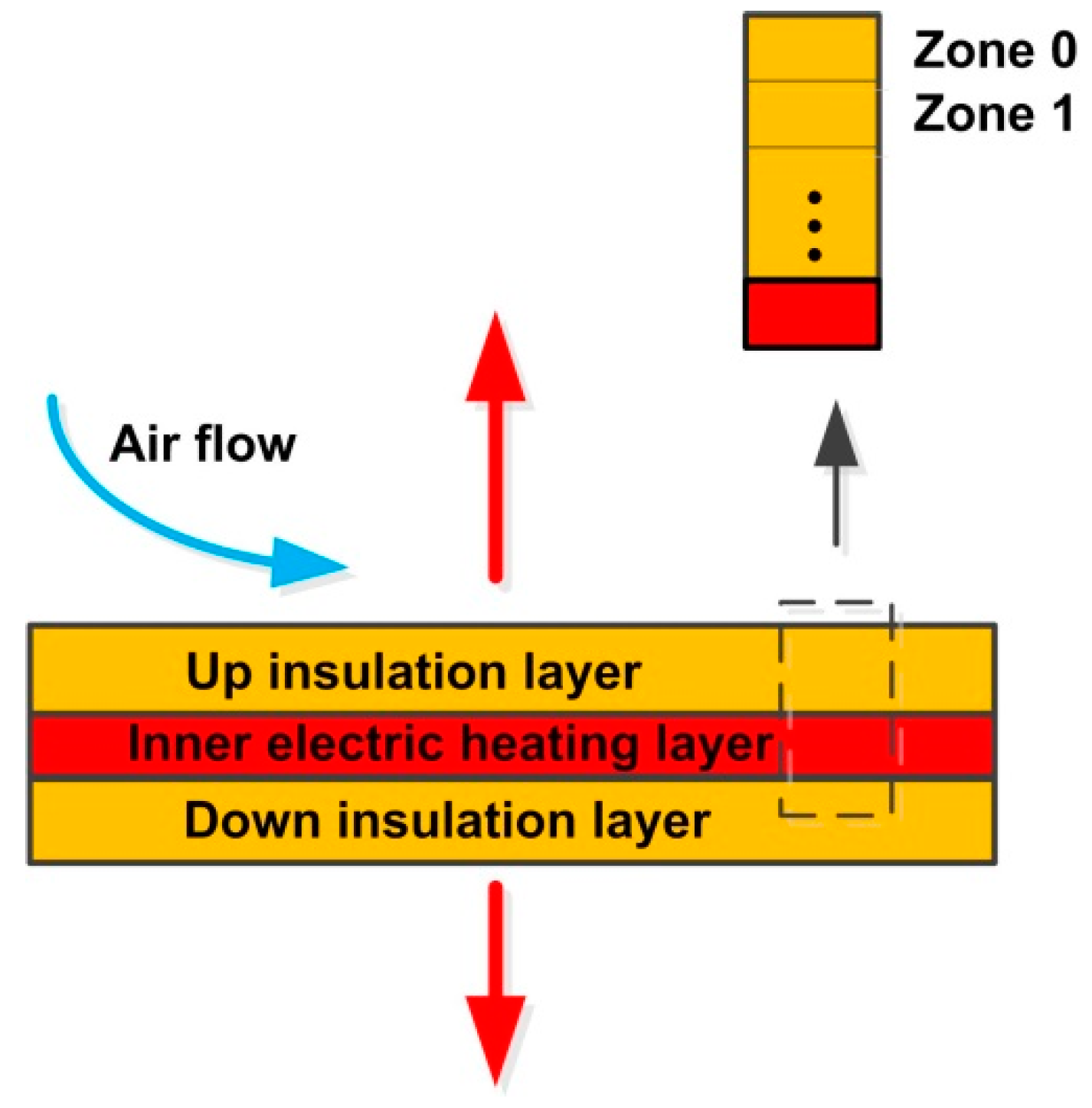



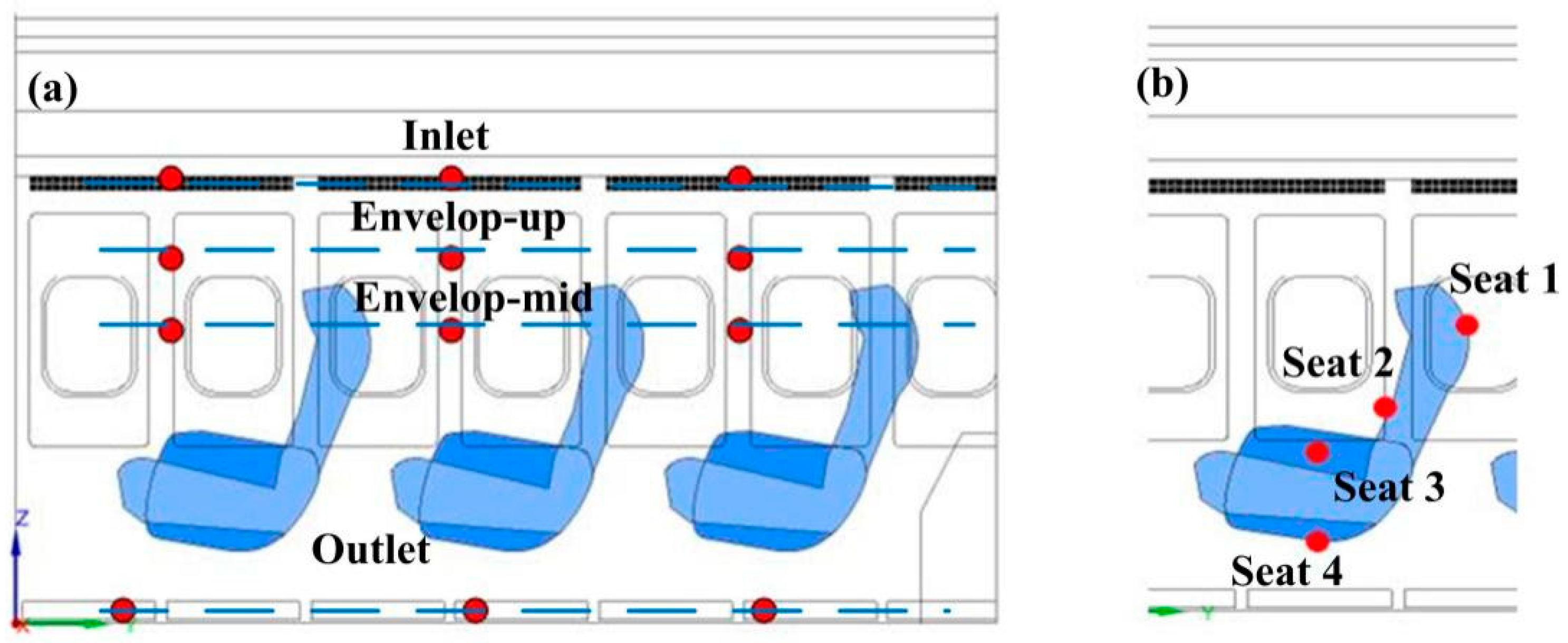
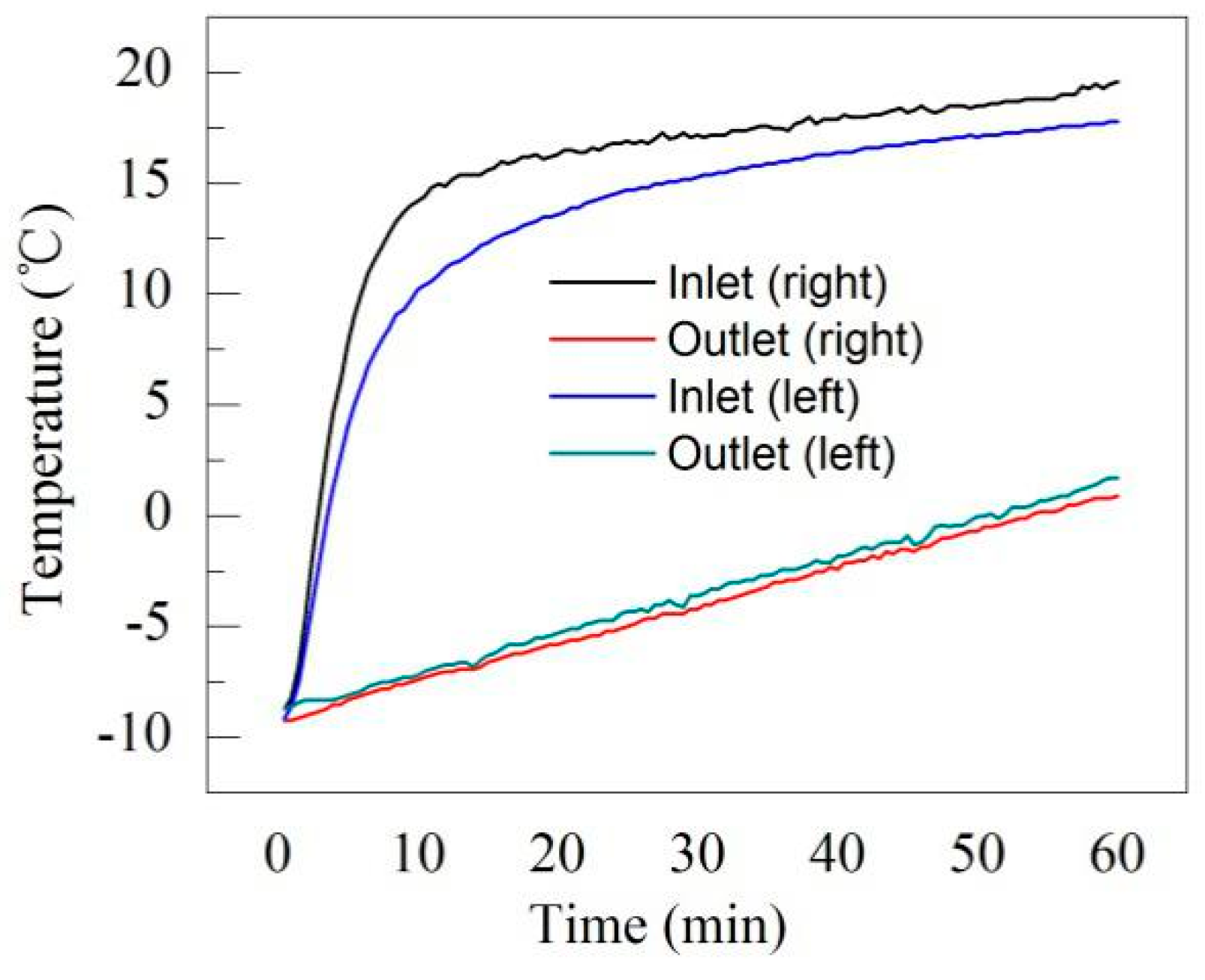
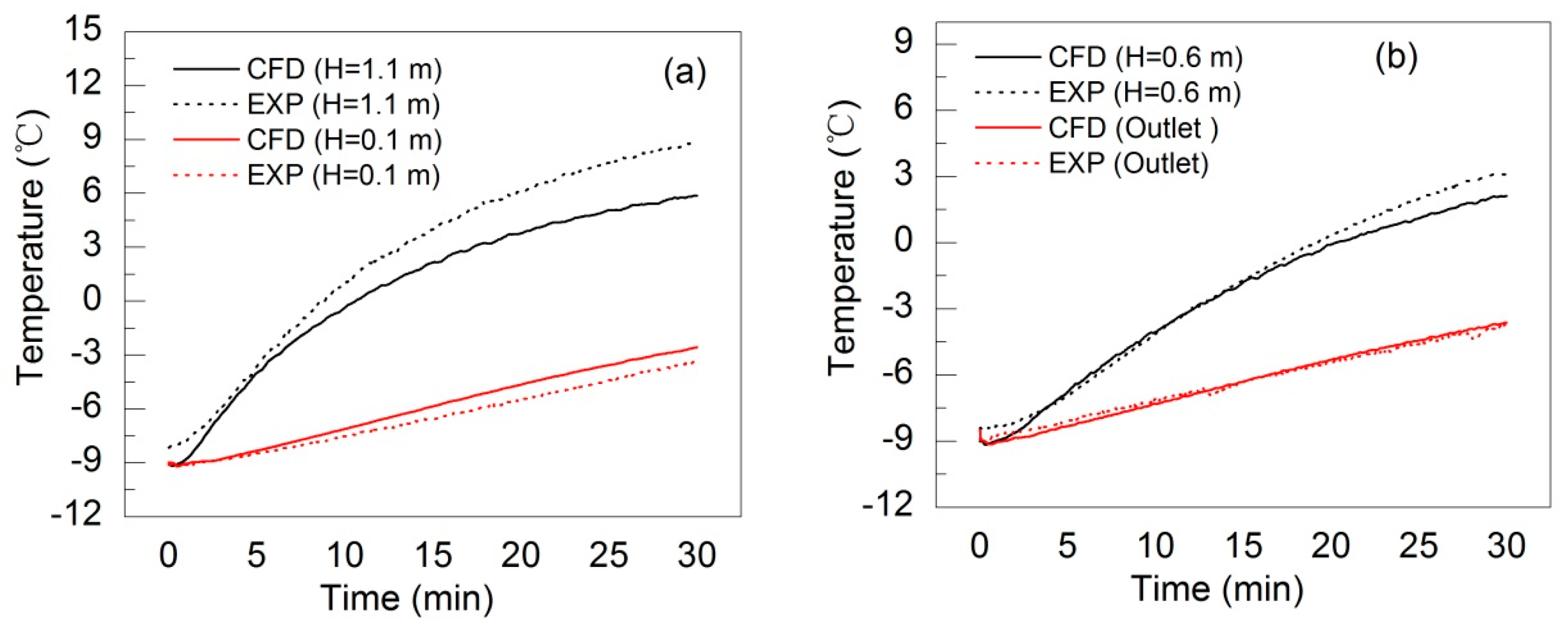
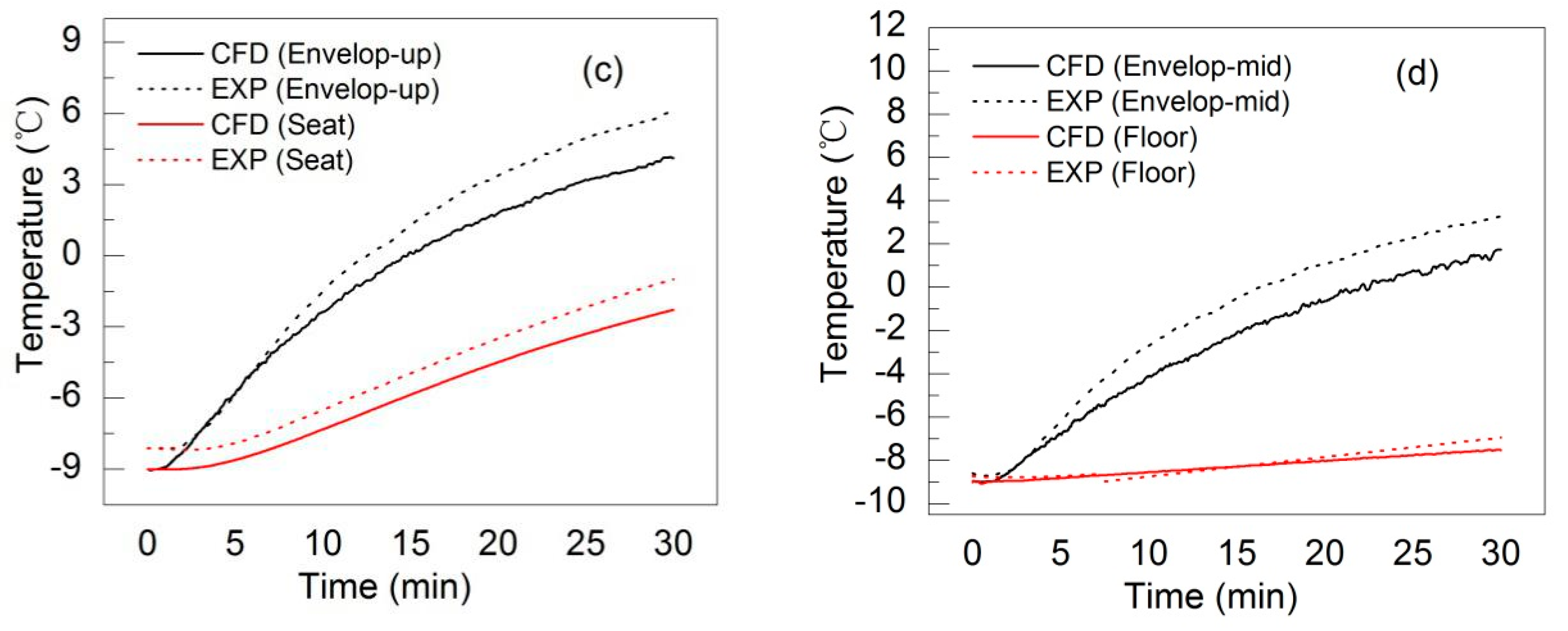

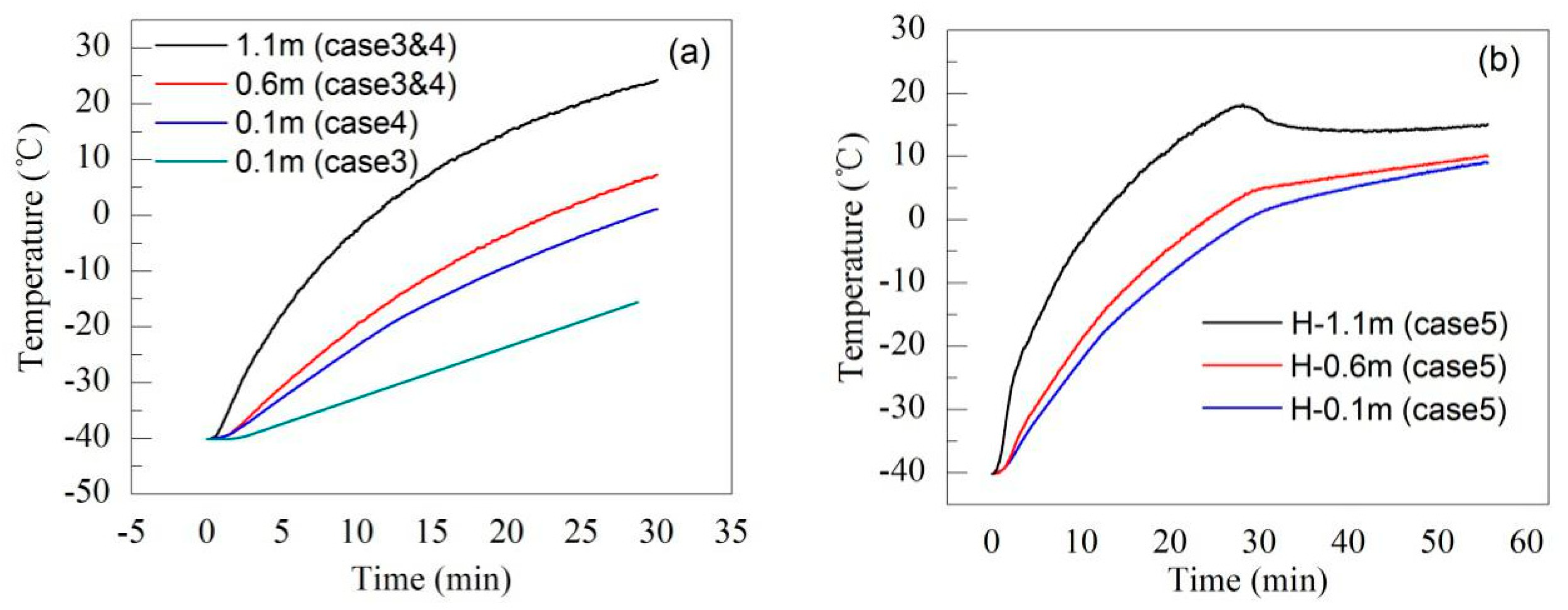
| Case No. | Electric Blanket (W/m2) | Heating Time (min) | Supplied Air Temperature (°C) |
|---|---|---|---|
| Method 3 | 0 | 30 | 75 |
| Method 4 | 350 | 30 | 75 |
| Method 5 | 400 | 55 | 0–30 min: 75, 30–55 min: 40 |
© 2019 by the authors. Licensee MDPI, Basel, Switzerland. This article is an open access article distributed under the terms and conditions of the Creative Commons Attribution (CC BY) license (http://creativecommons.org/licenses/by/4.0/).
Share and Cite
Yang, Z.; Long, Z.; Wang, G. Fast Heating Model for the Aircraft Cabin Air. Energies 2019, 12, 3565. https://doi.org/10.3390/en12183565
Yang Z, Long Z, Wang G. Fast Heating Model for the Aircraft Cabin Air. Energies. 2019; 12(18):3565. https://doi.org/10.3390/en12183565
Chicago/Turabian StyleYang, Zhi, Zhengwei Long, and Guangwen Wang. 2019. "Fast Heating Model for the Aircraft Cabin Air" Energies 12, no. 18: 3565. https://doi.org/10.3390/en12183565
APA StyleYang, Z., Long, Z., & Wang, G. (2019). Fast Heating Model for the Aircraft Cabin Air. Energies, 12(18), 3565. https://doi.org/10.3390/en12183565





